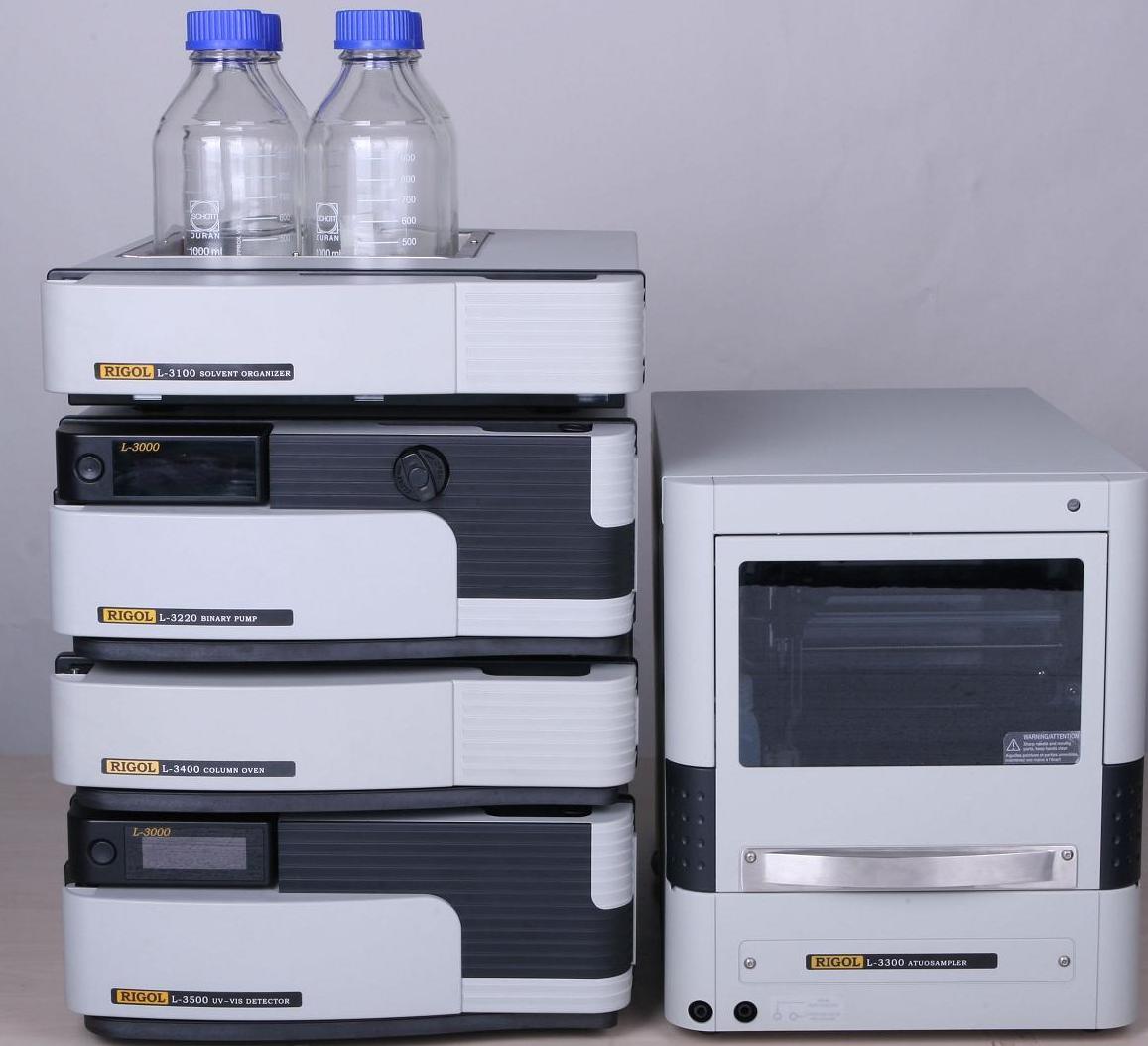
Liquid Chromatography
Several basic concepts and terms of liquid chromatography
1. Chromatogram and peak parameter chromatogram (chromatogram)-the sample flowing through the chromatographic column and detector, the resulting signal-time curve, also known as chromatographic elution profile (elution profile). Base line-After the mobile phase is flushed and the column and mobile phase reach equilibrium, the detector measures the outflow curve for a period of time. Generally it should be parallel to the time axis. Noise-the fluctuation of the baseline signal. Usually caused by poor power contact or transient overload, unstable detector, mobile phase containing bubbles or chromatographic column contamination. Drift-The baseline changes slowly over time. Mainly due to the unstable operating conditions such as voltage, temperature, mobile phase and flow rate, the contaminants or stationary phase in the column will continue to elute and drift. Chromatographic peak (peak)-a curve generated by the continuous signal in response to a component flowing through the detector. The protruding part on the outflow curve. Normal chromatographic peaks approximate a symmetrical normal distribution curve (Gaussian Gauss curve). There are two types of asymmetric chromatographic peaks: leading peak and tailing peak. The former is rare. Tailing factor (T) is used to measure the symmetry of chromatographic peaks. Also called symmetry factor or asymmetry factor. "Chinese Pharmacopoeia" stipulates that T should be 0.95 ~ 1.05. T <0.95 is the leading peak, and T> 1.05 is the trailing peak. Peak Bottom-the distance from the start point to the end point of the peak on the baseline. Peak height (height)-the distance from the highest point of the peak to the bottom of the peak. Peak width (W)-The distance between the two intersections of the tangents made at the inflection points on both sides of the peak and the baseline. W = 4σpeak width at half-height (Wh / 2) -peak width at half height. Wh / 2 = 2.355σ standard deviation (σ)-half of the peak width of the normal distribution curve x = ± 1 (inflection point). The inflection point of the normal peak is 0.607 times the peak height. The size of the standard deviation indicates the degree of dispersion of the components during the flow out of the column. σ is small, the degree of dispersion is small, the pole concentration is high, the peak shape is thin, and the column efficiency is high; otherwise, the σ is large, the peak shape is fat, and the column efficiency is low. Peak area (A)-the area enclosed by the peak and the bottom of the peak.
2. Qualitative parameter (retention value) dead time (t0)-retention time of components not retained. That is, the time when the mobile phase (solvent) passes through the column. In reversed-phase HPLC, sodium benzenesulfonate can be used to determine the dead time. Dead volume (V0)-the space occupied by the stationary phase from the sampler inlet to the detector flow cell. It includes 4 parts: the volume of the pipeline from the injector to the chromatographic column, the gap of the stationary phase particles in the column (occupied by the mobile phase, Vm), the volume of the column outlet pipeline, and the volume of the detector flow cell. Among them, only Vm participates in the chromatographic equilibrium process, and the other three parts only play the role of peak expansion. In order to prevent peak expansion, the volume of these 3 parts should be reduced as much as possible. V0 = F × t0 (F is the flow rate) retention time (retention time, tR)-the time from the start of injection to the maximum concentration of a certain component after the column. Retention volume (VR)-the volume of solvent that flows out from the start of injection until the maximum concentration of a component appears behind the column. Also called elution volume. VR = F × tR adjusted retention time (adjusted retention time, tR)-retention time after deducting dead time. Also called reduced retention time. When the experimental conditions (temperature, fixed equal) are fixed, tR only depends on the nature of the component, so tR (or tR) can be used for qualitative. tR = tR-t0 adjusted retention volume (adjusted retention volume, VR)-the retention volume after deducting the dead volume.
Seafood Tools,Seafood Scissors,Seafood Utensils Set,Seafood Utensils
Xiongyang Household Co., Ltd , https://www.nbyjkitchen-manage.com